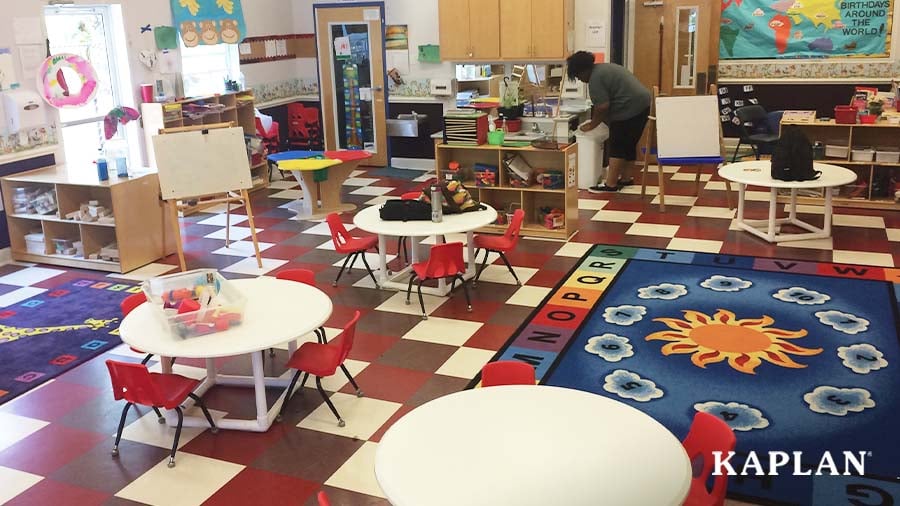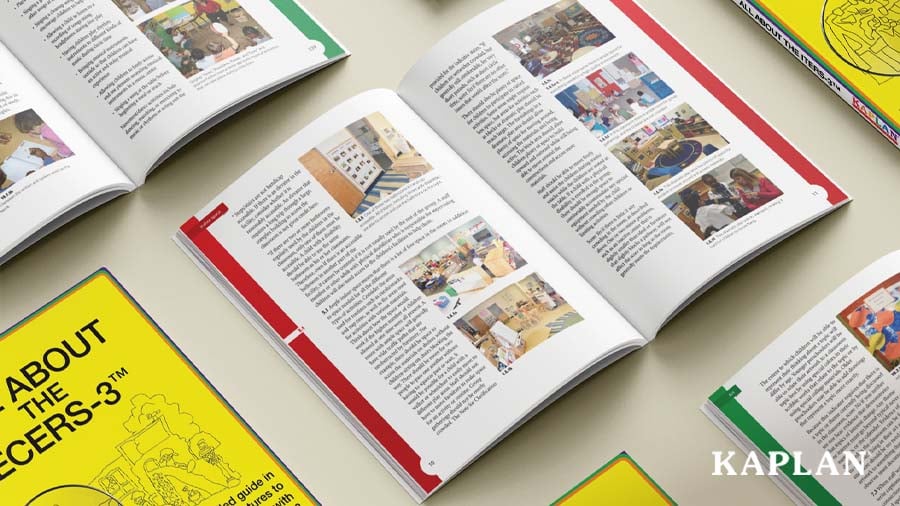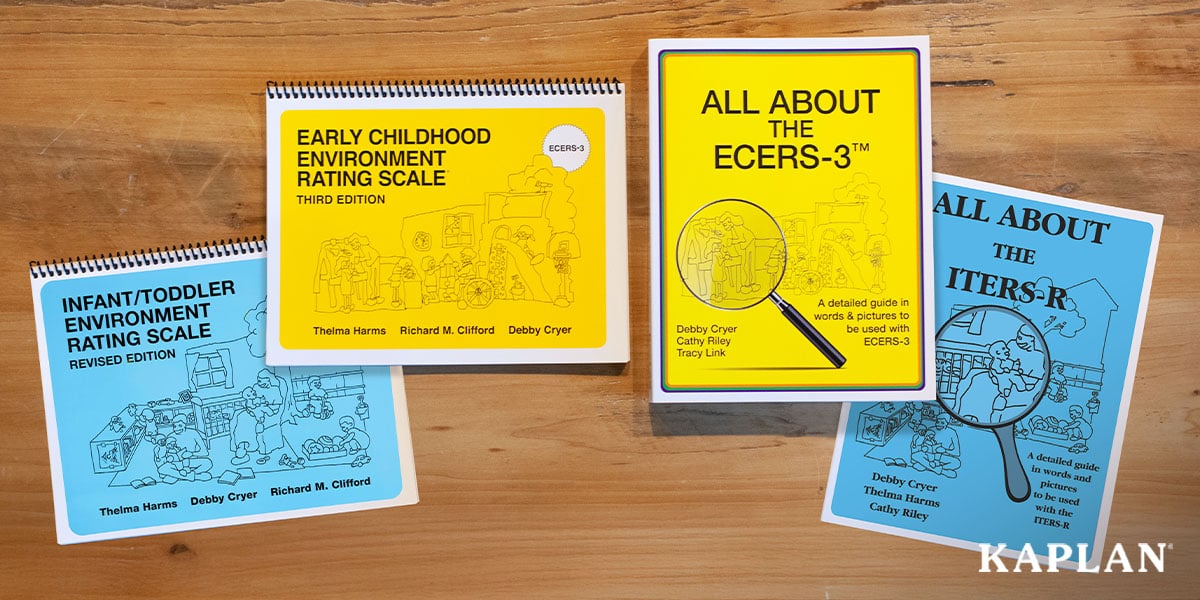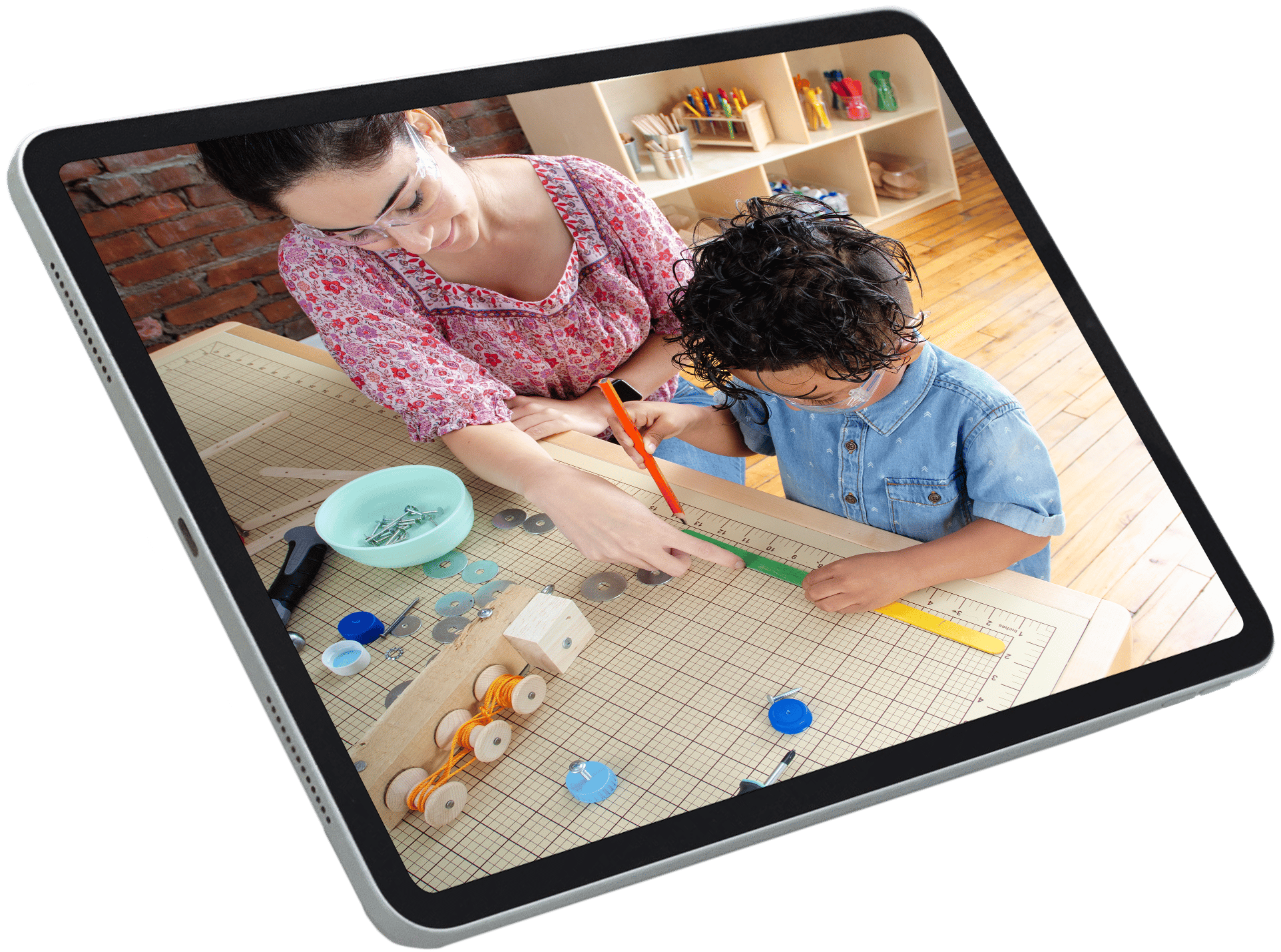As many early childhood leaders know, a high-quality program rating isn’t just a nice-to-have. It can lead to increased enrollment, additional state resources, and lasting trust with families. Most often, comprehensive rating scales like the ECERS and ITERS are key to achieving a coveted five-star quality rating.
Early childhood educators and administrators worldwide trust the tools to measure the quality of early childhood education programs. Yet, interpreting the requirements can be daunting for even the most seasoned professionals.
Achieving a high-quality program rating shouldn’t be a mystery. It should be clear, practical, and within reach. Do you need help navigating your next program evaluation? Or, do you need help interpreting these tools so you can improve your program’s quality rating score? We’re here to introduce you to our All About series of books, practical resource guides that make the understanding of the ECERS and ITERS tools clearer and less overwhelming.
What are the ECERS and ITERS?
The Early Childhood Environmental Rating Scale (ECERS) is a research-based tool used to measure the quality of early childhood programs for children ages three to five. The evaluation tool assesses how well a learning environment supports each child’s development across several domains, as well as their health and safety.Co-authors Thelma Harms, PhD, and Richard Clifford, PhD, released the ECERS in 1980 after rigorous testing and validation. Ten years later, they partnered with Debby Cryer, PhD, to develop the Infant/Toddler Environment Rating Scale (ITERS). This edition maintained the same depth, rigor, and research-based standards to ensure quality care for infants and toddlers.
Since then, the authors have released revised and updated editions, including the ECERS-R, ITERS-R, ECERS-3, and ITERS-3. Each version evaluates seven key elements of early childhood environments:
- Space
- Language and literacy
- Materials
- Routines
- Activities
- Staff-child interactions
- Supervision

Why are the ECERS and ITERS important for early childhood programs?
Over the years, educators and experts have hailed the ECERS and ITERS as gold standards for assessing program quality. Most states use a Quality Rating and Improvement System (QRIS) to rate, improve, and share the quality of early childhood programs using a star system. Depending on your state’s QRIS, evaluators may use either the ECERS or ITERS scales to assess your program, impacting your QRIS rating.
So, what does a QRIS rating mean for your program? A five-star rating signals the highest standard of quality in early childhood education. It builds trust in your program’s ability to support children’s growth in a safe, nurturing environment. It also paves the way for higher enrollment, increased tuition, and, most importantly, better outcomes for the children in your care.
There’s no doubt the ECERS and ITERS play an instrumental role in shaping high-quality environments. But, making sense of the standards—and bringing them to life in your program—is easier said than done.

What is Kaplan’s All About series?
Achieving a five-star rating means understanding each indicator at a granular level. Even slight missteps, like a skipped hand-washing step or artwork hung too high, can lead to lower scores. So, how can program leaders and staff interpret the scales and translate the requirements into actionable steps? That's where the All About practical resource guides come in. Kaplan is proud to be a publishing partner of the All About books, created by co-authors of the ECERS and ITERS rating scales to help programs like yours succeed. The books include in-depth explanations, real-world examples (with photos!), and practical instructions to help you clearly understand quality rating scores. They also interpret each item and indicator on the scale, making it easy for program staff to meet every requirement.
In our All About ECERS and ITERS collection of books, you’ll find:
- General information sections that provide an overview of each item listed in the ECERS-R, ITERS-R, ECERS-3, and ITERS-3 tools.
- A “Closer Look at Each Indicator” sections that give clear explanations demonstrating how to interpret each item and indicator within the scales, how much and what kind of evidence must be found to give credit for an indicator, and why the item or indicator is essential.
- Detailed instructions that will help you understand what to look for when deciding if a requirement is “true” or “false” and how you might score your program’s environment.
- Visual references with Over 700 high-quality color photographs providing real-world examples of quality practices to support the meanings of each indicator.
The All About books can be used as a comprehensive introduction to both the ITERS and ECERS scales. However, you’ll most likely use them as a reference to find information on an “as-needed” basis. The books are organized by subscale, making it easy for you to find areas of interest as you rate your program or make quality improvements to your environments. For example, if you’re working to improve the block area in your toddler classroom but aren’t sure whether a mixed grouping of blocks counts as one set or two, you can flip to the “blocks” section in your All About ITERS-3 book. There, you’ll find clear guidance on the indicator and how it should be scored.
The All About books are also handy when observers disagree on a score. With clear, detailed explanations of each indicator and scoring requirement, they help everyone get on the same page and determine the appropriate score for any environment.
Want to make it easier to improve the quality rating of your early childhood program?
At Kaplan, we equip early childhood professionals to create impactful, high-quality learning experiences that help children learn, grow, and thrive from the start. That’s why we offer trusted resources designed to make complex tools, like the ECERS and ITERS, easier to understand and apply.
With our All About book series, you’ll gain the clarity and confidence to accurately interpret the rating scales and build a learning environment truly worthy of a five-star rating. Explore our collection of All About books to prepare for your next quality assessment. 

